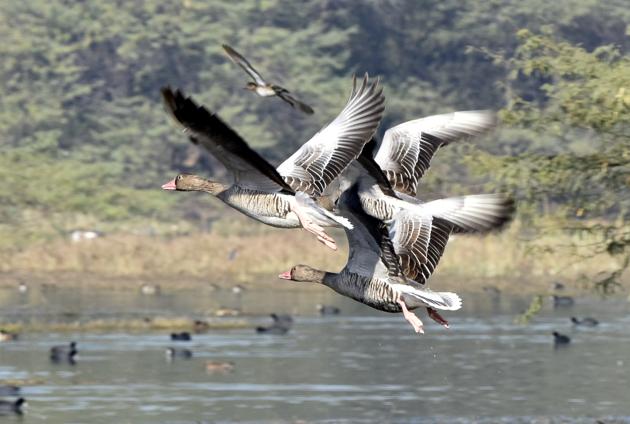Gurgaon: Basai draws more winged wonders than Sultanpur, says bird experts
The Basai swamp, which is spread over 700 acres and is not a protected site for exotic fowls, attracts around 280 species of birds every year
The Basai swamp area, which is spread over an area of 700 acres, attracts about 280 different species of birds every year from various parts of the world. The site is unique as a large number of winged wonders that are spotted in Gurgaon come to nest in the unprotected area rather than the Sultanpur National Park, a protected site, said bird enthusiasts.

Even as the National park is about seven kilometres away from Basai, the park fails to attract birds that depend on reed beds as Sultanpur has a different habitat than the swampy area of Basai, the bird experts claimed.
“The Sultanpur National Park is a mix of shrub land and forest area which is why it supports birds that depend on the grassland ecosystem. However, birds that need a wetland-like habitat prefer Basai,” Pankaj Gupta, a bird enthusiast, said.
However, a plant for processing construction and demolition waste, which is to come up at Basai, poses a threat to the winged guests flocking to the swamp.
Another birder said, “Haryana has a wonderful network of wetland and areas which can be developed to protect the ecosystem and Basai is one of them.”
Compared to Sultanpur, Basai about 10 kilometres away from Gurgaon, is an integrated network of scrub land, fallow and cultivated fields, vegetation and flooded zones that support a variety of bird species. The vegetation in the area is mostly dominated by Acacia trees and small shrubs.
In addition, Basai has rich reed beds of typha, phragmites (reeds) and water hyacinth. Although Basai is not a notified wetland, Basai draws thousands of birds. Thus, losing Basai means losing connect with specific birds as well, claim ecologists.
Read I Gurgaon: Maintain status quo on Basai wetland till November 16, says NGT
“Basai needs community conservation protection as it is an important birding area and the majority of birds spotted there are migratory in nature. Hence, whatever the site has should be preserved,” Lima Rosalind, conservation education and interpretation professional with a conservation group, said.
Basai mostly attracts migratory birds that nest only for a brief spell and hence, it is more unique than the protected area of Sultanpur, claimed bird experts. The winged guests arrive by late September and leave the area by late February.
The Basai birding area has been classified as an “Important Bird Area” by the Bombay Natural History Society (BNHS), Wildlife Institute of India (WII) as well as SACON (Salim Ali Centre for Ornithology and Natural History).
The site attracts thousands of Ducks and Geese, including Greylag, Barheaded, Shovellers, Pintails, Gadwalls, Pochards and Teals. Species such as Ruffs, Avocet, Plovers and Stints also flock to the site.
The wildlife department officials are of the opinion that Basai is a nesting area for both migratory and resident birds and hence, it is an ideal site for the winged wonders to derive food, space and safety.
“We will conduct a study on bird species in the protected Sultanpur area and Basai. Both the areas have different habitats and attract different species of birds. It is the bird that decides its resting space while migrating to a different place,” Vinod Kumar, conservator of wildlife, South Haryana, said.
Stay updated with all the Breaking News and Latest News from Mumbai. Click here for comprehensive coverage of top Cities including Bengaluru, Delhi, Hyderabad, and more across India along with Stay informed on the latest happenings in World News.
Stay updated with all the Breaking News and Latest News from Mumbai. Click here for comprehensive coverage of top Cities including Bengaluru, Delhi, Hyderabad, and more across India along with Stay informed on the latest happenings in World News.





